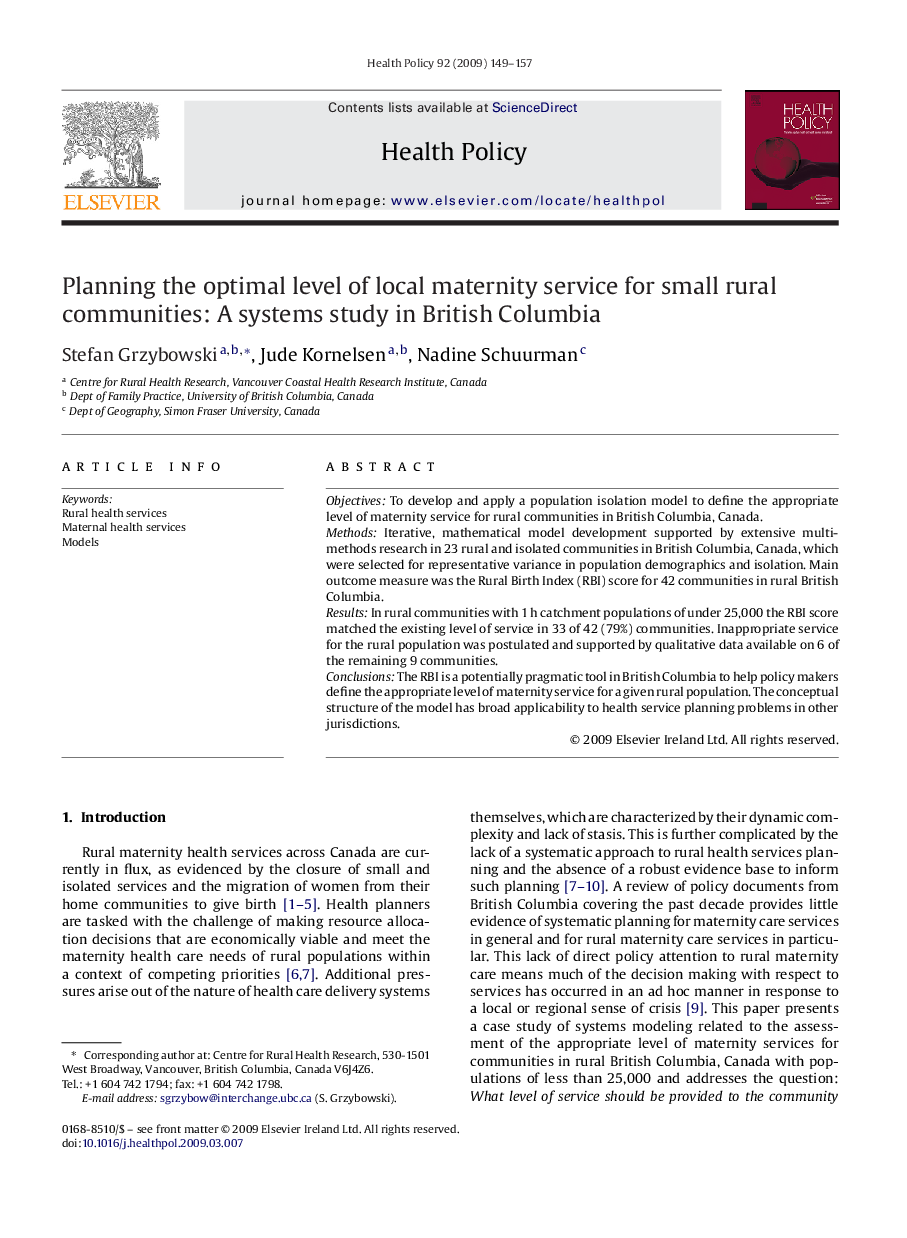| Article ID | Journal | Published Year | Pages | File Type |
|---|---|---|---|---|
| 4198519 | Health Policy | 2009 | 9 Pages |
ObjectivesTo develop and apply a population isolation model to define the appropriate level of maternity service for rural communities in British Columbia, Canada.MethodsIterative, mathematical model development supported by extensive multi-methods research in 23 rural and isolated communities in British Columbia, Canada, which were selected for representative variance in population demographics and isolation. Main outcome measure was the Rural Birth Index (RBI) score for 42 communities in rural British Columbia.ResultsIn rural communities with 1 h catchment populations of under 25,000 the RBI score matched the existing level of service in 33 of 42 (79%) communities. Inappropriate service for the rural population was postulated and supported by qualitative data available on 6 of the remaining 9 communities.ConclusionsThe RBI is a potentially pragmatic tool in British Columbia to help policy makers define the appropriate level of maternity service for a given rural population. The conceptual structure of the model has broad applicability to health service planning problems in other jurisdictions.
